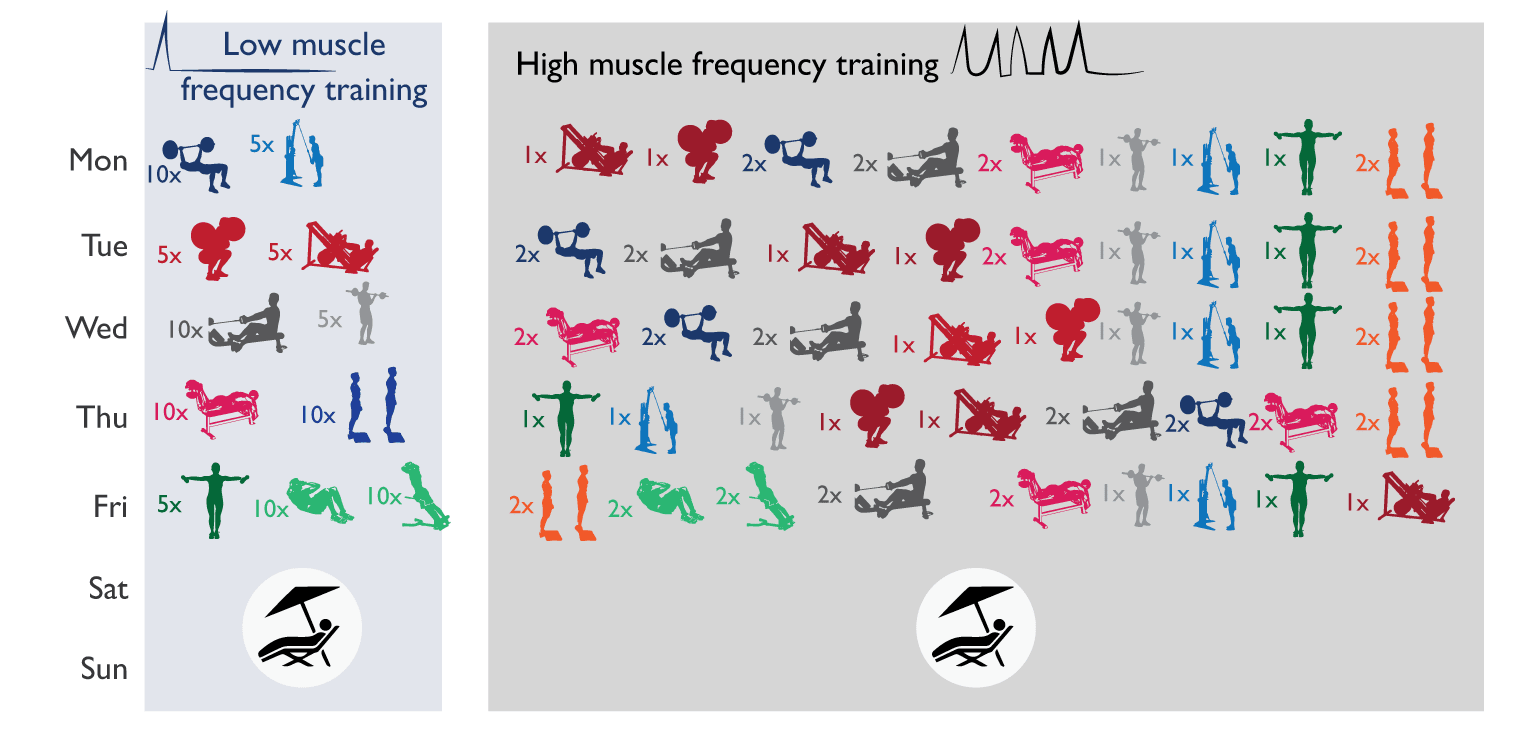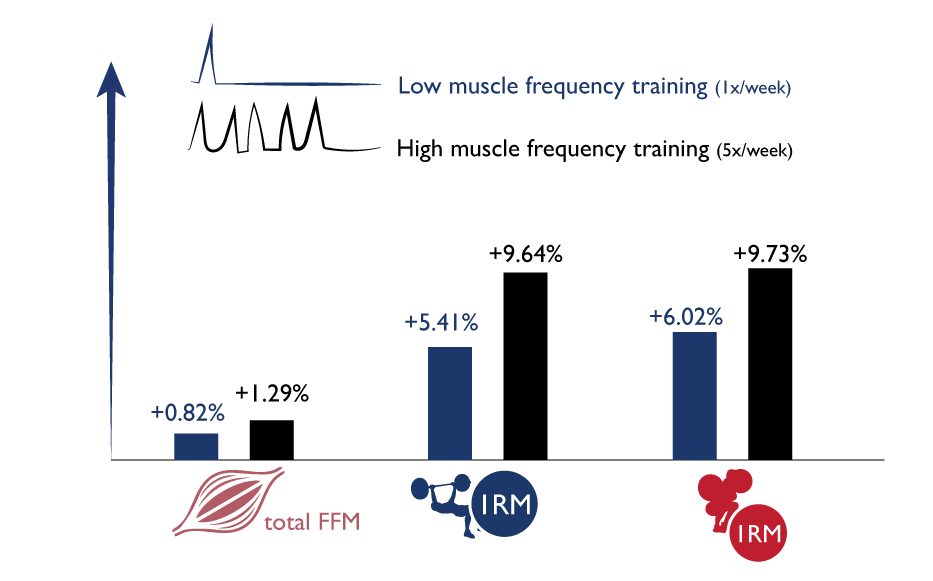Bro splits optimal after all? [New study review]
Since the Norwegian Frequency Project shocked the fitness community by finding greater strength development and muscle growth when training each muscle 6x compared to 3x per week, research on training frequency has boomed. I recently reviewed 2 new studies on training frequency and now we have another great study by Gomes et al. (2018).
The researchers took 23 genuinely intermediate level trainees with a back squat of ~165% of bodyweight and bench press of ~130% of bodyweight and randomized them into 2 groups: a very high and a very low training frequency group. Both groups trained Monday to Friday and performed the same 11 exercises with the same intensity (70-80% of 1RM) and the same amount of sets (~15 per muscle group) to failure, but the low frequency group performed a bro split where each muscle was intended to be trained once a week, whereas the high frequency group actually performed áll the exercises in the program every training session. This resulted in the bro split group only performing 2 exercises per session for 5 or 10 sets per exercise and the full-body group performing 11 exercises for only 1-2 sets per exercise. The infographic below summarizes the training splits.
Note that I say the bro split group ‘intended’ to train each muscle once a week, because this is rarely ever the case in practice or in this study. The researchers did a pretty good job of separating the muscles, but technically the erector spinae, gastrocs and anterior delts were trained twice a week with some additional nearly inevitable overlap in other muscles, e.g. 10 sets of squats and leg presses will stimulate the hamstrings to some extent and 10 sets of bench presses will also stimulate the lateral delts to some extent. This is important to note, because a good deal of research supports that trained individuals need to train a muscle at least twice a week for maximum results. The controversy is mainly if higher frequencies than this are beneficial.

And here are the results. Adherence to the training was practically perfect in both groups. Both groups gained strength and muscle without any significant differences between the 2 groups. However, if you look at the chart below, you’ll see the full-body group outperformed or at least rivaled the bro split on every measure in absolute terms (muscle growth was tested on various other locations). Since these were genuinely intermediate level trainees and the study only lasted 8 weeks, it is plausible that over the long run, the full-body training group would achieve better gains.
I’d also note that this was, in my opinion, a terrible way to set up a high frequency program. I understand the design from a scientific point of view completely, but as a coach, I would never have my clients perform the same exercises every single day and have them train each muscle to failure every day. This is closer to a 5-day overreaching phase followed by 2 days rest than a regular high frequency training program.

An additional finding was that the bro split group experienced significantly greater levels of muscle soreness throughout the study. This suggests they experienced greater muscle damage and tentatively supports that muscle damage is not a mechanism of muscle growth. It is probably also the reason bros prefer bro splits: they feel like they work better and because they experience this amount of soreness, they also think they can’t train with higher frequencies. Bros typically base everything they do on how they feel and then rationalize with pseudoscience AKA broscience.
So what do we make of this study? Here are my take-aways.
- Volume is the primary driver of muscle growth. Training frequency has a strictly secondary role. As long as you put in enough volume in the program as a whole, you don’t miss out majorly by not going to the gym very frequently.
- High training frequencies are an effective way to reduce muscle soreness without limiting muscle growth or strength development.
- Benefits of training a muscle more than twice a week are probably largely reserved for truly advanced trainees, though the trend in the research is still that higher training frequencies rival or outperform lower training frequencies in every regard, except maybe in novices. Since high training frequencies are effective to increase training volume and seem to have no downside, from a Bayesian perspective, high frequency training is arguably the way to go for trainees beyond the novice level.
Study reference
High-frequency resistance training is not more effective than low-frequency resistance training in increasing muscle mass and strength in well-trained men. Gomes GK, Franco CM, Nunes PRP, Orsatti FL. J Strength Cond Res. 2018 Feb 27. doi: 10.1519/JSC.0000000000002559.
 Want more content like this?
Want more content like this?
Then get our free mini-course on muscle building, fat loss and strength.
By filling in your details you consent with our privacy policy and the way we handle your personal data.

